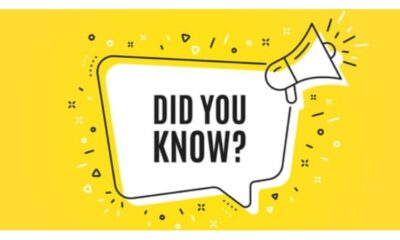Business
4 Challenges Women Face in the Financial Sector

Not that long ago, women were prohibited from owning credit cards. Over the past fifty years, women’s financial inclusion has improved, but more has to be done. In the banking, saving, and investing industries, as well as the labor market, women continue to face certain unfair disadvantages.
Let’s examine some of the major barriers that women face in the financial industry, along with encouraging developments going forward.
1. The pay gap between men and women is 17%
The gender wage gap is the main cause of the majority of women’s financial disadvantages. Men get paid more than women. The most recent statistics shows that American women are paid roughly $0.83 for every dollar earned by men. This indicates that women are paid approximately 17% less than males.
2. The Wealth Gap Between Men and Women is 68%
Women find it more difficult to invest and save due to lower wages. You will never be able to invest as much money as someone who makes 17% more than you, no matter how well you manage your budget.
Given that the average income of a single woman is approximately 32% that of a single man, it is not surprising that the gender wage disparity has also resulted in a gender wealth discrepancy. After deducting obligations from personal assets, the average net worth of an American woman is $5,541, but an average net worth of an American male is $12,188.
Women of color and Latina women see even more extreme disparities in wealth. As of 2019, families headed by Hispanic women owned $0.10 of wealth for every dollar owned by households headed by white males, while Black women owned only $0.05 of money.
3. The Retirement Income of Women is Roughly 70% That of Men
It is more difficult for women to accumulate a sizable nest egg for retirement since they tend to make less money and spend more time caring for family members or children while they are not employed. Thus, the total retirement income of women (including Social Security and investment accounts) is around 70% of the total retirement income of men.
Even employer-sponsored retirement savings plans, such as 401(k)s, are not available to many women. Just 43.5% of working-age women are enrolled in a workplace retirement plan, according to data from the U.S. Department of Labor. Women are more likely than men to work part-time jobs that aren’t eligible for retirement accounts, which is one explanation. The ability to work a full-time job with solid benefits, such as a 401(k), can go a long way toward helping people save money for retirement. However, many women lack this additional support.
4. Far Too Many Financial Counselors Do Not Appreciate Women
A Certified Financial PlannerTM or financial advisor can help you increase your retirement savings and make better investment choices to create wealth for the future. But regrettably, not enough financial advisors are making an effort to make women feel valued, at ease, and heard.
According to New York Life research,
Women believe they are “being treated differently” or “patronized” by financial counselors, according to 48% of them.
Of the women, 44% think there are disparities when it comes to investing.
Financial counselors are less likely to listen to women’s suggestions, according to 40% of respondents.
Financial counselors, according to 40% of women, “push women out of financial conversations”
Financial advisors, particularly those who work with women, should listen to their customers more carefully. The realm of investments shouldn’t be exclusive to guys. Financial inclusion is not just the moral thing to do, but it also benefits companies.
Indications of promise for female investors
It’s not all bad news for women in terms of finances, though; there are plenty of reasons to be optimistic. Women are increasingly inclined to invest for retirement and to purchase stocks, and they are frequently quite skilled at it.
Women Are Purchasing Stock
According to Fidelity studies conducted in 2023, 68% of women were saving for retirement and over 60% of women were investing in the stock market. Compared to historical patterns, this is an increase from 40% of women owning equities. Even somewhat more women than men—62% of women versus 59% of men—own stocks.
Women Make Excellent Investors
Women typically outperform males in the investment game, despite the haughty attitudes of certain condescending financial consultants. Studies reveal that women typically outperform men in terms of investing returns while assuming less risk. This is because women trade less frequently, are less prone to follow speculative investment fads, and maintain composure throughout market ups and downs.
For women, this translates into an additional 0.4% to 1.0% of average yearly returns. Women typically begin with a lower salary and net worth than men do, but they also tend to be more skilled at the actual labor of investing.
-

 Business3 weeks ago
Business3 weeks agoPrakash and Kamal Hinduja: Driving Social and Environmental Change
-
Education4 weeks ago
Fred DuVal: University Leadership as a Critical Resource for Climate Change Research and Life-Saving Solutions
-

 Health3 weeks ago
Health3 weeks agoThe Hinduja Brothers Commitment to Global Health: Empowering Communities Across Borders
-

 Cryptocurrency3 weeks ago
Cryptocurrency3 weeks agoDesigned For The Masses: How Akasha (AK1111) Is Unlocking Crypto For The Next Billion Users
-

 Cryptocurrency4 weeks ago
Cryptocurrency4 weeks agoNexaglobal & Future World Token (FWT): Could This Be the Next Big Crypto Investment of 2025?
-

 Sports4 weeks ago
Sports4 weeks agoWomen’s NCAA Tournament 2025 Sweet 16: Full Schedule, Fixtures, Teams, Bracket, and How to Watch March Madness Basketball Match Live
-

 Startup1 week ago
Startup1 week agoCost-Saving Strategies Every Small Business Owner Should Know to Boost Efficiency
-

 Startup3 weeks ago
Startup3 weeks agoMatthew Denegre on the Art of Deal Sourcing: Finding the Right Investment Opportunities























